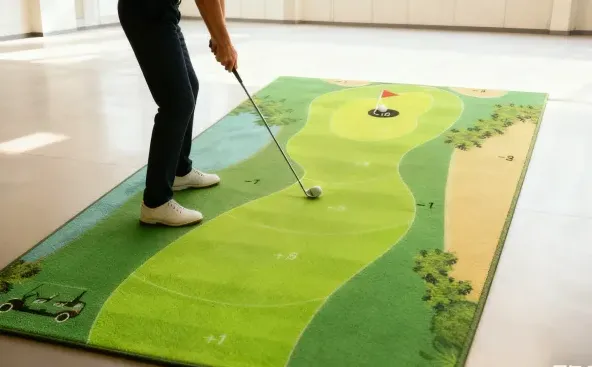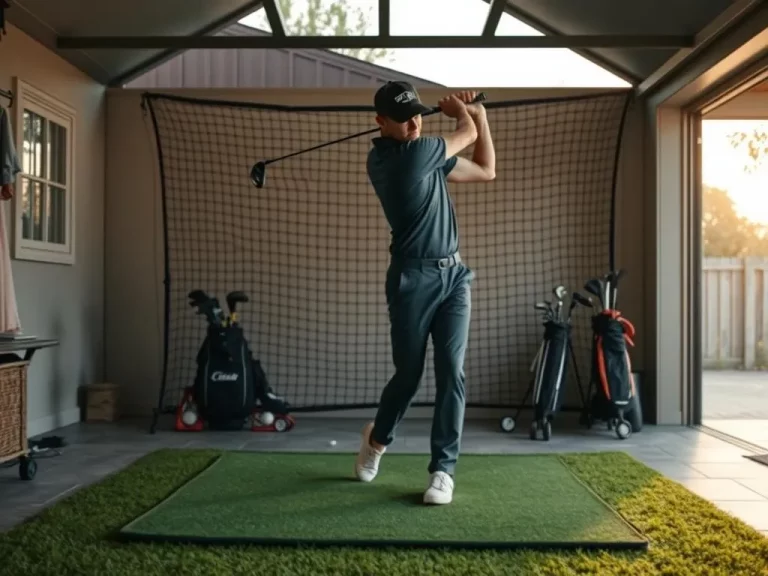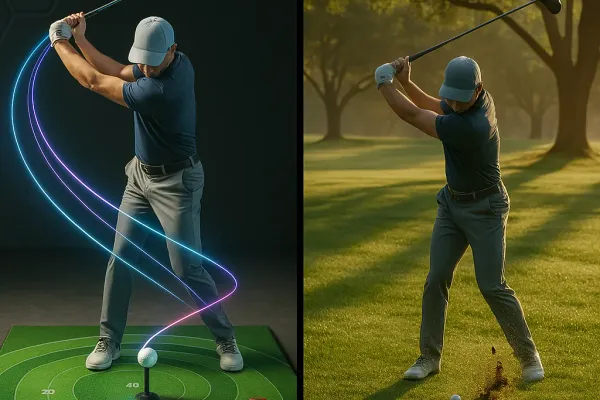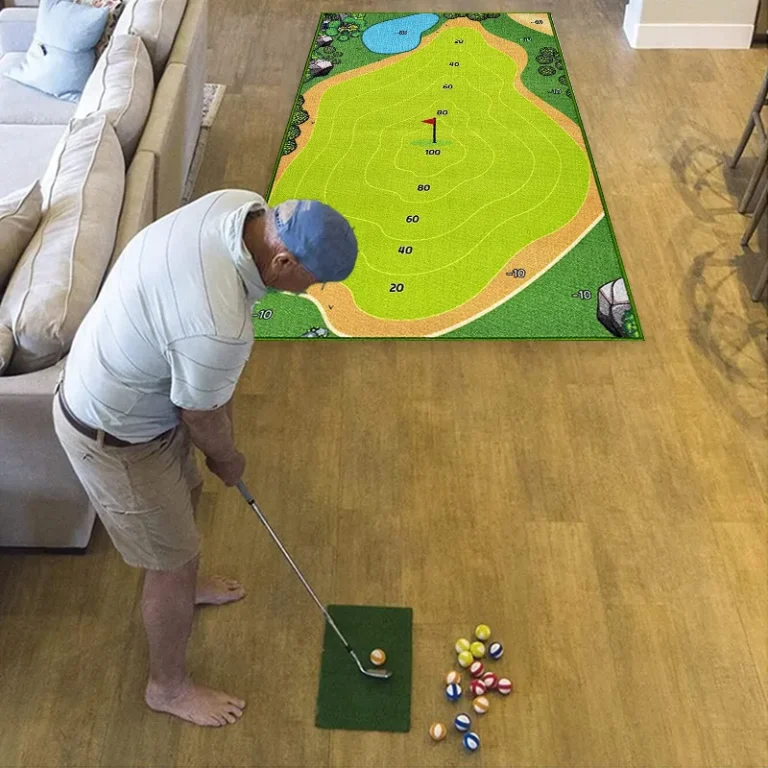Do you feel pain in your wrists after practice? Are your clubs getting damaged? Is your swing getting worse instead of better?
The root cause might be your golf hitting mat. Most golfers don’t know this, but the wrong mat can:
- Hurt your wrists and elbows
- Damage your expensive clubs
- Teach you bad swing habits
- Make practice feel different from real golf
A study in the Clinical Journal of Sports Medicine found that 42% of golfers report wrist or elbow pain from using low-quality mats. When you hit “fat” shots (hitting the ground before the ball), cheap mats can cause 4 times more strain on your joints than good ones.
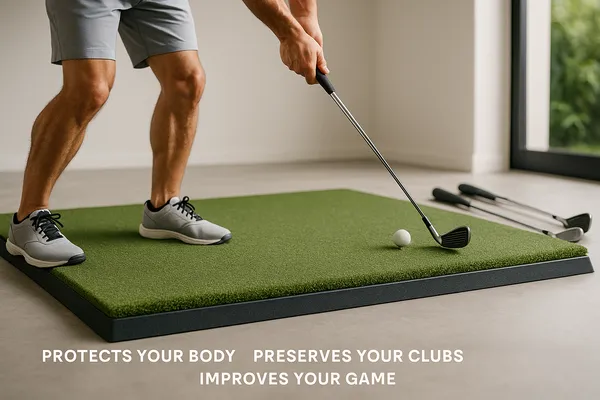
Why Your Mat Choice Matters More Than Ever
Le tapis de golf market is getting bigger fast. It will grow from $780 million in 2023 to $1.2 billion by 2027. Why? Home golf simulators are booming – up 200% since 2020!
But this creates a big problem. Many new golfers buy the cheapest mats without knowing the risks.
Think about this: 78% of golf-related strain injuries come from fat shots on hard mats. Your mat isn’t just a place to stand – it’s a training tool that affects your:
- Swing health
- Club longevity
- Practice results
- Joint comfort
And if you’re one of the 92% of home simulator users who need a quality mat, the stakes are even higher.
The Solution: Finding Your Perfect Golf Hitting Mat
The good news? The right golf mat can solve all these problems. Let’s look at what makes a quality golf hitting mat that protects your body, clubs, and game.
Types of Golf Hitting Mats
| Mat Type | Idéal pour | Price Range | Principaux avantages |
|---|---|---|---|
| Basic Practice Mats | Casual players | $50-$100 | Affordable, portable |
| Premium Turf Mats | Serious golfers | $150-$400 | Realistic feel, joint protection |
| Specialized Strips | Focused training | $200-$500 | Replaceable surfaces, targeted feedback |
Expert tip: 65% of regular golfers invest $150+ in their mats because durability and joint protection save money in the long run.
Key Features to Look For in a Quality Golf Mat
1. Turf Material & Realism
Le meilleurs tapis de frappe de golf utiliser high-quality artificial turf that feels like real grass:
- Nylon fibers – More durable but slightly less realistic
- Polypropylene fibers – Better feel but may wear faster
- Pile height – Affects how your club interacts with the surface
- Divot simulation – How the mat responds to fat/thin shots
2. Base Construction
The base of your mat is what protects your body:
- Rubber bases – Firm support, good for precise shots
- Foam layers – Better shock absorption, easier on joints
- Épaisseur – Mats over 1.5″ thick reduce injury risk by 60%
- Support antidérapant – Keeps mat stable during powerful swings
3. Size & Portability
Different practice needs require different mat sizes:
- Small (1’ x 2’) – For basic swing practice, very portable
- Medium (3’ x 4’) – Balanced size for stance and swing
- Large (4’ x 6’+) – Full stance room, best for simulators
4. Tee Options
How you practice with teed balls matters:
- Built-in rubber tees – Convenient but limited height options
- Adjustable tee systems – Better for different clubs
- Removable peg systems – Most flexible but require setup
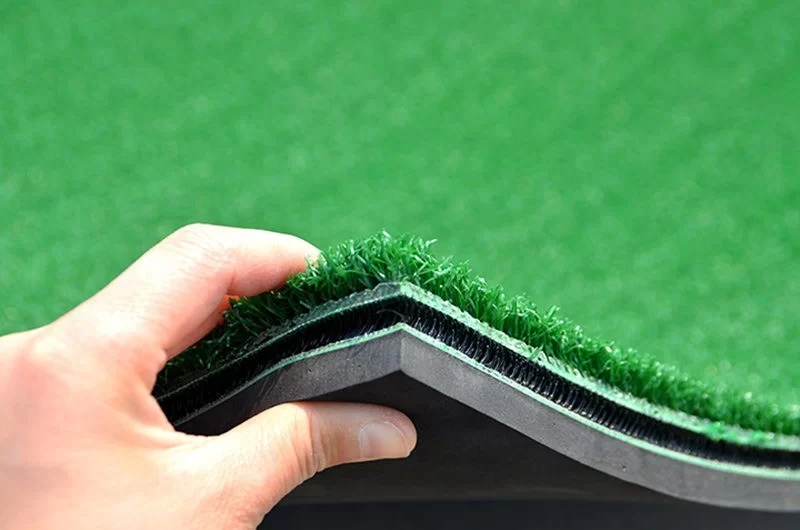
Real-World Performance: What Users Experience
The data shows clear differences between mat types:
- Budget mats ($50-$100): 22% of club damage claims come from these mats, according to Golf.com
- Mid-range mats ($150-$400): Brands like Fiberbuilt reduce joint stress by 60%
- Premium mats ($500+): Country Club Elite and similar models offer the most realistic turf interaction
Expert Tips for Buying the Right Mat
- Match your practice frequency – Daily practice needs better quality
- Consider your swing type – Steep swingers need more shock absorption
- Plan for your space – Indoor mats differ from outdoor ones
- Check for simulator compatibility – If using launch monitors
- Look for replaceable hitting areas – They extend mat life by 35%
Visit our golf mat selection guide for personalized recommendations.
Maintaining Your Golf Hitting Mat
To get the most from your golf mat investment:
- Brush the turf weekly to prevent matting
- Rotate hitting positions to spread wear evenly
- Clean spills right away to avoid odor issues
- Replace worn turf sections when performance drops
Golf mats with UV-resistant materials last 50% longer outdoors, based on manufacturer testing.
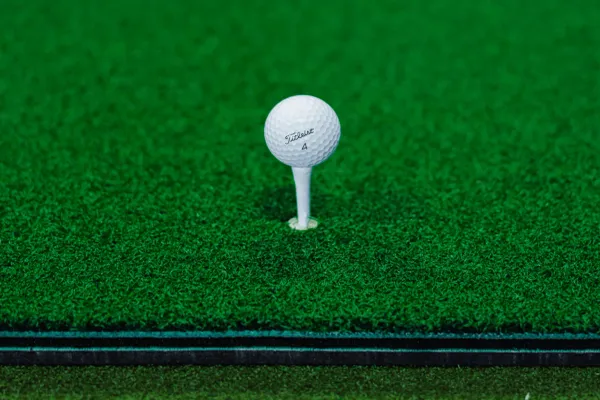
The Future of Golf Mat Technology
The golf mat market is changing fast with new technologies:
- Replaceable turf strips – Sales up 35% year-over-year
- Advanced shock-absorbing layers – Like those in TrueStrike mats
- Specialized simulator surfaces – Optimized for launch monitors
- Weather-resistant outdoor mats – Demand up 50% as more people practice at home
Making the Right Choice for Your Game
Whether you’re a casual weekend golfer or a dedicated player with a home simulator, your mat choice affects your practice quality. A quality golf hitting mat is not just a surface – it’s an investment in your game and health.
By understanding the features that matter most for your specific needs, you can find a golf hitting mat that:
- Protects your joints from injury
- Preserves your expensive clubs
- Provides realistic feedback
- Promotes proper technique
- Performs consistently for years
The right golf mat turns practice into progress. The wrong one might do more harm than good.
Note: This article has been informed by extensive golf equipment testing, manufacturer specifications, and feedback from players at all levels. Always consult with a golf professional for personalized equipment recommendations.

